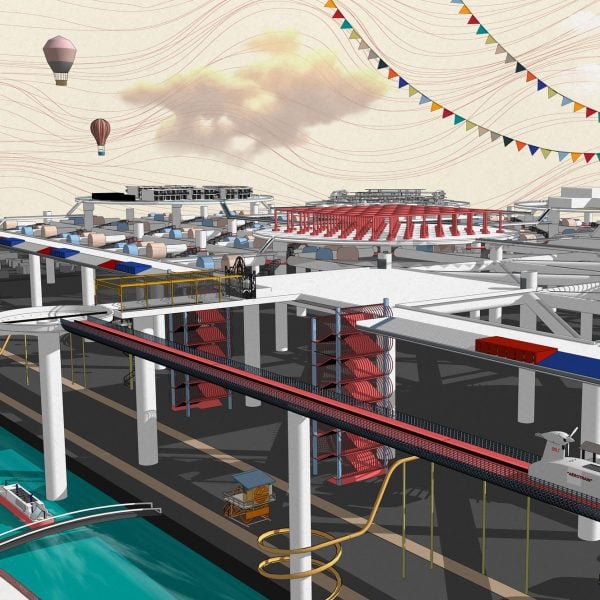Dezeen School Shows: a palace integrating bees to represent anthropocentric domestication is included in Dezeen’s latest school show by students at the Paris School of Architecture.
Also included is a speculative design project that imagines a near-future in which people select who they date through gene-screened ‘perfect matches’ and a project that explores the merits and drawbacks of recent advances in artificial intelligence.
Institution: Paris School of Architecture
School: Paris School of Architecture
Course: Masters in Architecture
Tutors: Henry Beech Mole, Yasemin Sahiner and Martin Tubiana
School statement:
“Paris School of Architecture is an experimental and innovative new architecture school with an international focus based in central Paris.
“It is the only entirely postgraduate architecture school in France teaching solely in the English language and prepares its graduates to operate across Europe and the rest of the world.
“Paris School of Architecture is pedagogically radical. It is the first new independent school of architecture in Paris in over a century, created in response to the radical changes over the last decade, and the changing nature of architectural practice today.
“The incubative pedagogical model at PSA – which places emphasis on each students’ individual ideas and research – critically engages with the contradiction and dilemma of the world today, critiquing intrenched design values to pose alternative ‘micro-fictions’.
“Moving away from the instructive pedagogical methods of the past, it is a place for the incubation and development of each student’s individual ideas, situated within the context of a support network of practicing architects and designers.
“The students’ work exhibited at this year’s show design instead for the diversity and unpredictability of the metropolis, always questioning unofficial motives, human desires and offering uncompromising versions of the future.”
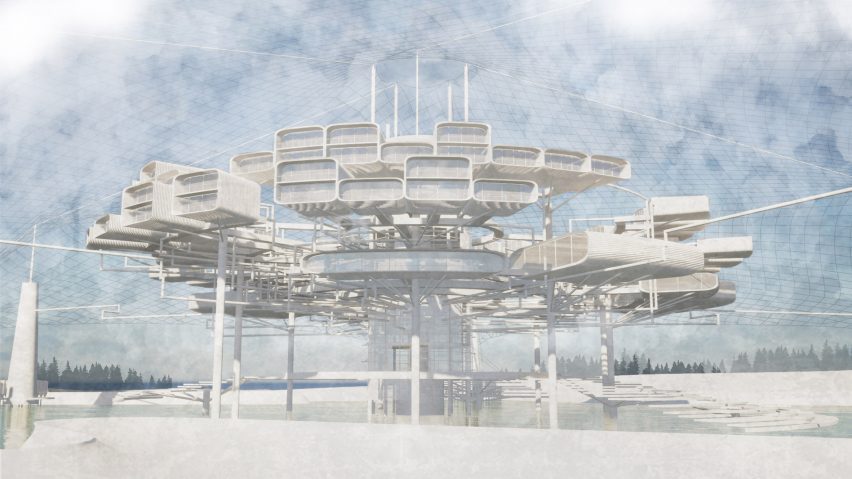
Dissension by Vanessa Bauer
“This critical design project depicts a future where an accelerated rise of climate change, pollution and water scarcity has provoked an impossible status quo, which thus creates two main active political groups: the Earthlings who prioritise the salvation of the planet Earth and the Humans who prioritise their own health and wealth while exploiting nature for their own benefit.
“This project focuses on the Humans’ facility, situated in the East Paris region near the Marne river, which serves as one of the headquarters where they live, work and produce their own food and water.
“The productive dwelling hub embodies their vision of a nature-detached and technology-driven future in the form of a strategic water and infrastructural crossroad.
“By emphasising innovation, self-sufficiency and advanced water filtration, this project questions the complex relationship between nature and human wellbeing in the face of environmental challenges.”
Student: Vanessa Bauer
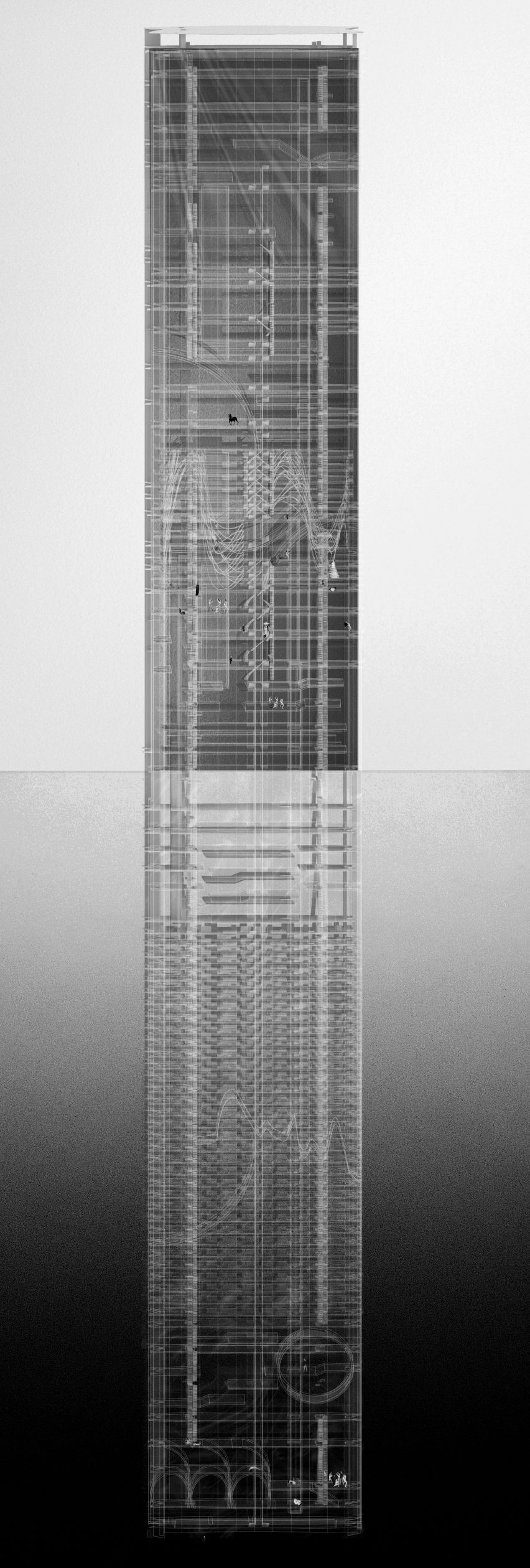
The Tower of Sins by Laura Tissen
“In this critical design project, a tale unfolds featuring an egoistic and opportunistic tech tycoon, who ascends to power with manipulative tactics, exploiting the short attention span of energy crypto and the superficiality of political alliances.
“Beneath the polished facade lies the manifestation of his own desire – a yearning for pleasure, power and debauchery.
“Montparnasse Tower becomes the embodiment of sins – a realm where he can indulge in lavish parties, explore the limits of pleasure and assert his dominance over the masses.”
“The project challenges the notions of societal manipulation, the superficiality of alliances and the human longing for liberation from societal norms.
“It invites reflection on the intricate interplay between pleasure, guilt, and the pursuit of power, all encapsulated within the sinful confines of Montparnasse Tower.”
Student: Laura Tissen
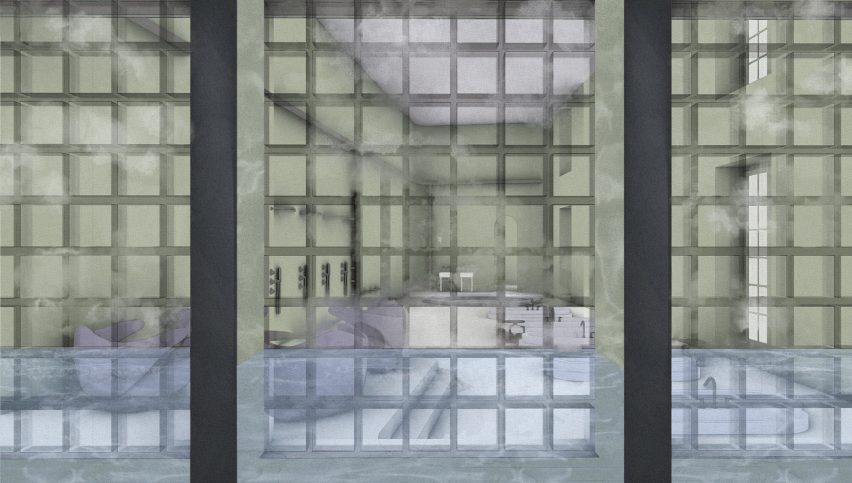
Vivid by Samuel Spindler
“As a temporary solution (in order to prevent climate catastrophe) our society has been transformed into deindividualised servants that were offered a cyber-rebirth in exchange for their sacrifice of fulfilment.
“In a world where the poisonous metaphysical causes a severe addiction, our senses are in true danger of dying.
“The Sanatorium of Mother Vivid is an institution that functions as the antidote to this trauma and a safe haven for the incurable.
“It forces the body to feel again as well as it lets the mind roam free – one eye sees, the other feels.”
Student: Samuel Spindler
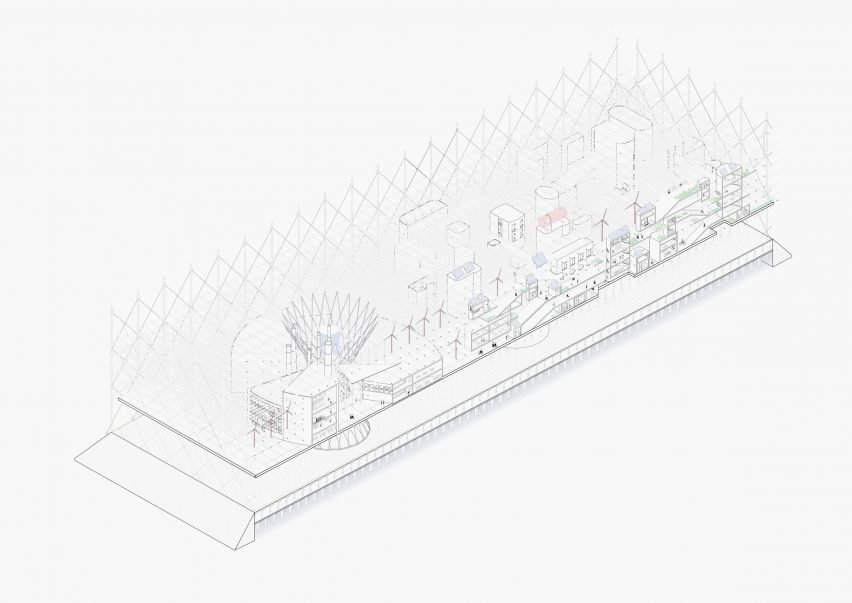
The Scarcity Mindset by Mazen Alameddin
“This project was derived in response to an environmental crisis, the dawn of a a hyper-nationalist era and an unequal division of resources between citizens and settlers.
“This new paradigm shift embraces the concept of scarcity through self-sufficiency and sustainable design.
“The scenario proposes that even under extreme conditions, limited resources can lead to a more adaptive, efficient and improved design and way of living.”
Student: Mazen Alameddin
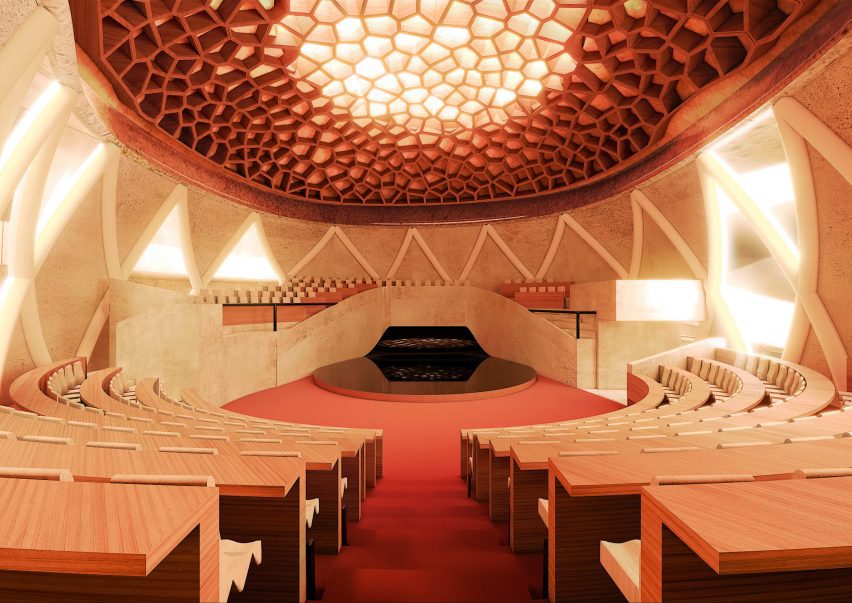
Public Sphere: Architecture of the Protest by Oluwaremilekun Ojumu
“This is a critical design project that delves into a speculative future scenario where an all-encompassing social network dominates the public domain.
“Drawing inspiration from the ancient Greek Agora, it examines the potential of architecture to facilitate mass expression and demonstration, highlighting the need for intentional design to foster inclusive and representative public spaces.
“At its core, the project presents an evocative underground headquarters, inspired by Oscar Niemeyer’s Siege du PCF, as a symbolic space of opposition to the pervasive control of the network.
“Exploring themes of protest architecture, free speech, the architect’s role in manifestations and the transformative influence of public squares, ‘Architecture of the Protest’ encourages contemplation on the profound impact of design in building communities and promoting societal transformation.”
Student: Oluwaremilekun Ojumu
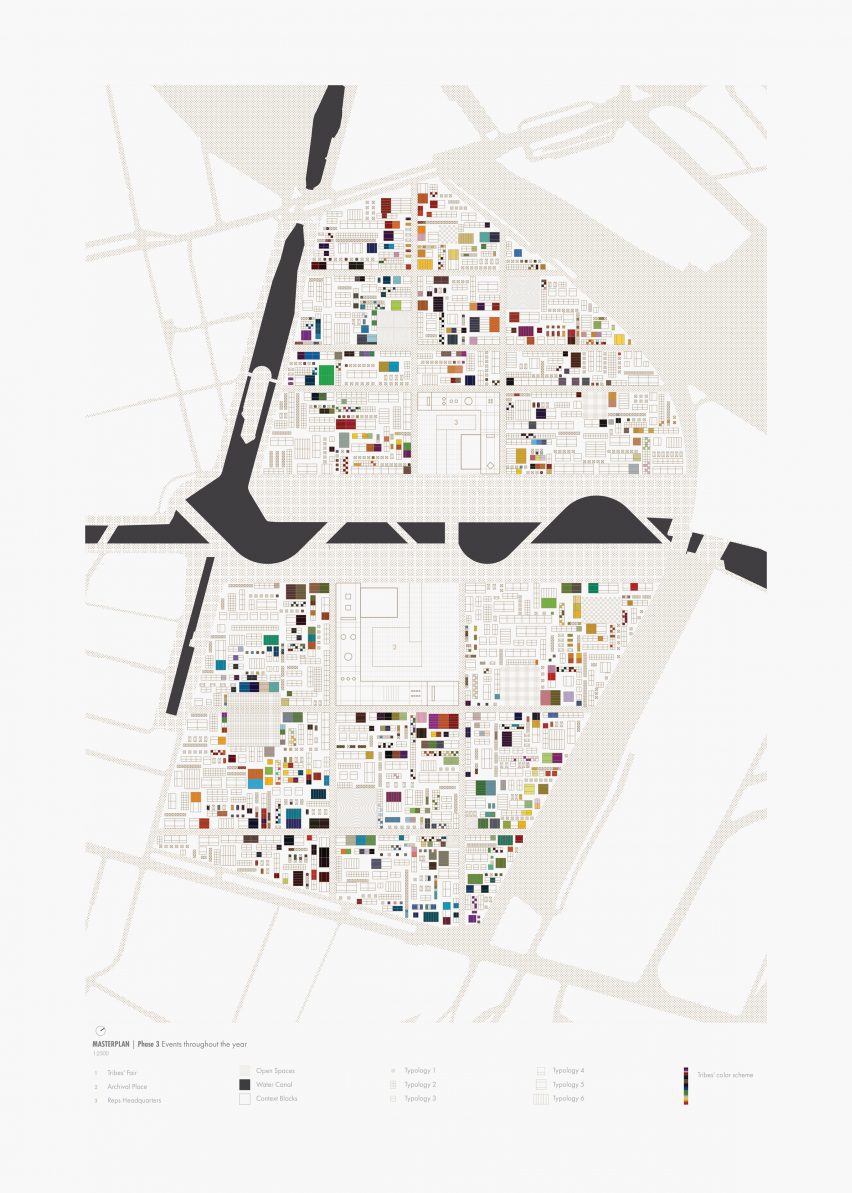
Codified by Yael Saadia Dickter
“Codified is an open criticism towards current and increasing political disengagement across the world, which envisions a new form of society – today’s nation states as we conceive them disappear and are replaced with a new ‘tribal system’.
“Individual ideologies become the main driver to form this new society, which is managed through an axis-based algorithm inspired by the concept of social media to keep people constantly engaged.
“These ideological axes, freeze and form clusters of people called ‘tribes’, composed by active participants that share common values.
“As a result of this new tribal segmentation, certain geographical regions remain as “neutral zones” where tribes come together and leverage each of these areas as a neutral place of encounter and exchange of knowledge.”
Student: Yael Saadia Dickter
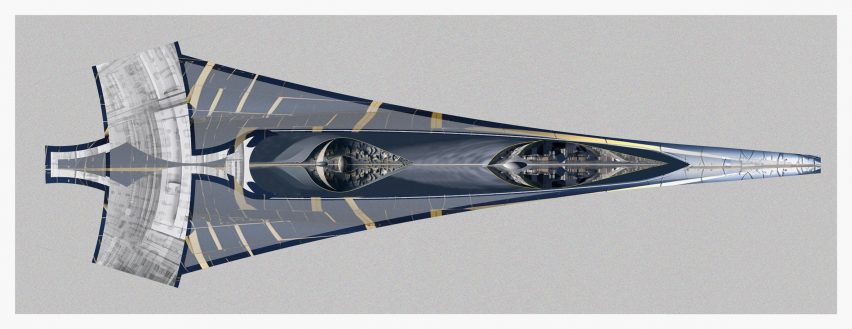
Wahmy by Helmi Mhiri
“In a speculative future, humanity boldly severs the chains of nature, embracing a destiny of technological augmentation and cybernetic transcendence.
“Guided by the sentient AI known as Wahmy, they forge a path towards a multi-planetary existence, sculpting a new chapter in human evolution among the lunar crater Timocharis.
“As a relic of the earth-bound phase in the evolution of our species, the Timocharis outpost contains within its demountable architecture a fragment of the centre of Paris, long since lost.
“This fragment of the era of multi-planetary habitation serves a spiritual function – a memory of what was lost and how adversity was overcome.”
Student: Helmi Mhiri
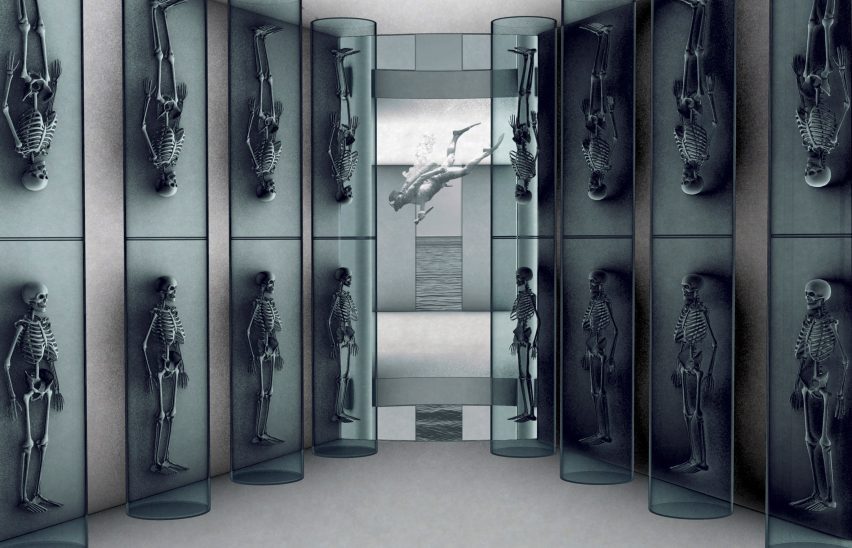
A Plague on Both Your Houses by Fanney Margrét Eiríksdóttir
“In the wake of the energy crisis following Russia’s invasion of Ukraine, the French government established a new LNG importation facility in the mouth of the Seine.
“Desperation following the fall-out from the resulting energy crisis forced the EU to sanction what then became a free port in France’s otherwise high-tax jurisdiction.
“The free port was leased to Europe’s largest company, luxury goods conglomerate LVMH. This has seen the benefit – in relation to recent trends based on the use of biological materials (in fashion and the fetishisation of bodily elements of celebrities to produce luxury products).
“The deregulated and low-tax free-port inevitably attracts the wealthy. It also opens the opportunity for advancements in controversial sectors of the rising biotechnology industry, free from regulations constraining scientific testing with biological materials.
“The resulting secluded micro-state ‘Le Péché’ combines disparate activities at the extremes of production and consumption, where the ultra-righteous scientific knowledge workers exist in close proximity to the cancel-worthy super-rich.
“Le Péché is a free-port where people with extremely opposed life principles are forced to coexist, ending in dire consequences.”
Student: Fanney Margrét Eiríksdóttir

What’s in a name? by Paula Glindemann
“If you could ensure that your children had the chance for a perfect life, you would do it, wouldn’t you?
“Free from genetic disease, with the greatest physical and intellectual prowess, destined for high-worth careers and incredible longevity in the best of health.
“‘What’s in a name?’ is a critical design project which imagines, through a corporate tie-up between genetic editor CRISPR and dating app Tinder, a near-future in which people select who they date and reproduce with through gene-screened ‘perfect matches’.
“The gene screening technology allows users to find a reproductive partner who is their genetically ‘ideal’ counterpoint so they may conceive their ‘perfect’ child.
“This project explores these emerging trends through the creation of an annual festival that gives their participants the opportunity to select and reproduce with other people purely based on genetic advantage.”
Student: Paula Glindemann
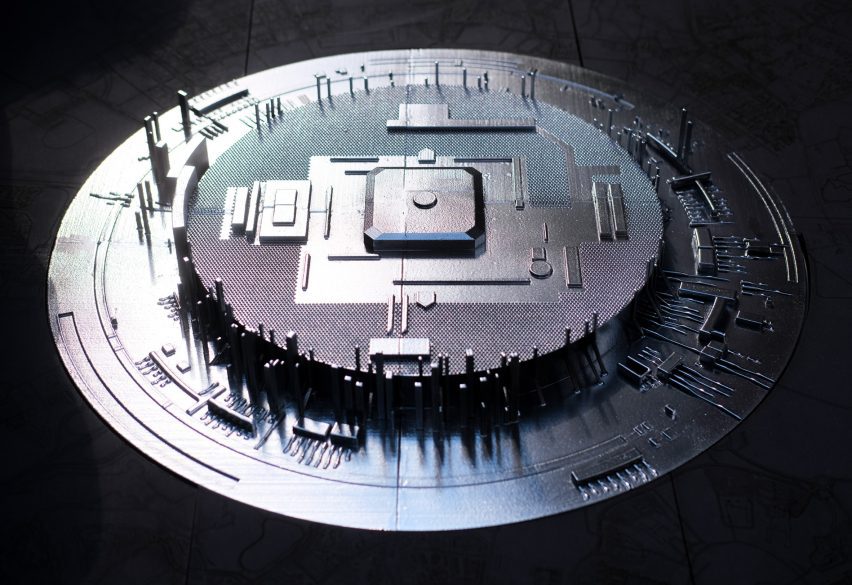
Liberty/Overrule by Anna Ludmann
“On 12 July 2022, text to image generative AI MidJourney was launched, only four months’ before ChatGPT, an artificial intelligence chatbot was made available by OpenAI.
“Both releases are part of a wider ecosystem of generative AI developments within the last 12 months that will have profound effects on the future of work, creativity, employment, intellectual property, the infrastructural systems, and politics, to name but a few.
“This project, entitled Liberty/Overrule intends to explore and critique these emerging technologies and their application to society, as well as their use as a design tool in architecture and urbanism.”
Student: Anna Ludmann
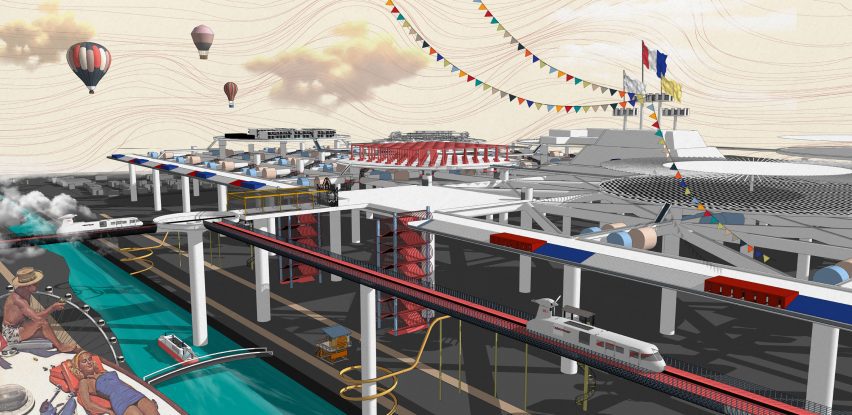
Built-over by Gauri Sunil Mali
“This critical design project explores a potentially radical reaction to globalisation in a post-war world caused by hyper-nationalised repatriation.
“In a scenario where all borders – except trade and the internet – are closed while countries look for inward betterment, an ecological reward system is implemented to sponsor vacations to foreign lands.
“How does architecture respond to build over geopolitically-charged tourism?
“The commission of a grand village of tourism is situated on a reclaimed forest (previously a gunpowder factory) in close proximity to CDG airport from which holidaymakers arrive by Aero-train.
“Aeroplanes that are no longer needed are retrofitted and reused to build an urban architecture above the trees, preserving them and the local population’s right to the land, while keeping a controlled separation in a choreographed glimpse of Paris within itself.”
Student: Gauri Sunil Mali
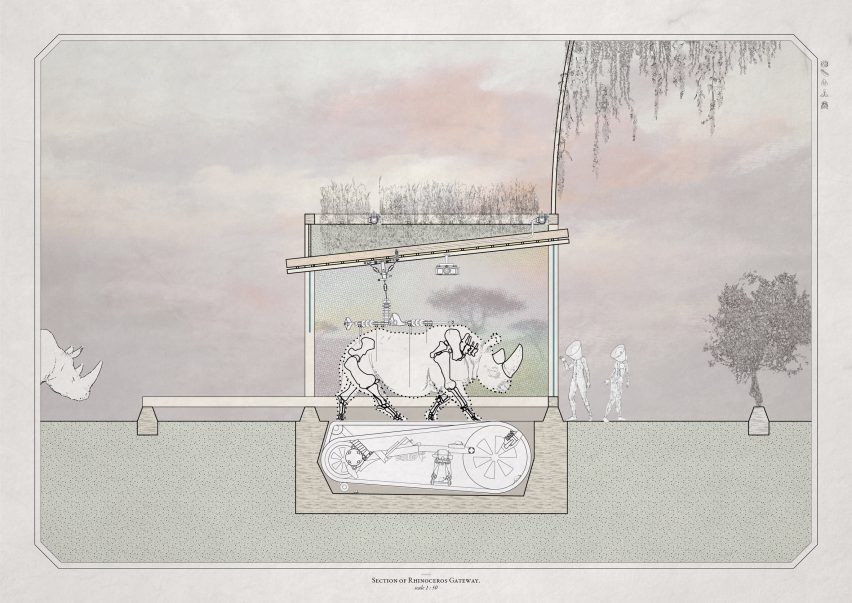
The Animals and Their Layla by Eyub Acikgoz
“The following project functions as a fable – it looks to history to critique our treatment of animals and each other within our current context in order to question our future.
“With every leap in technology and civilisation, comes consequences – yet the same stories are told with different characters and different settings.
“Having developed postpartum depression in a society of digital idolatry, a queen from a genetically modified celebrity bloodline commissions several subversive, animal-centric programmes on the grounds of her architectural confines in the Trianon Estate of Versailles.
“The project provocatively positions three works symbolising different human-animal relationships: a snow leopard menagerie to represent idealized wilderness, a new palace integrating bees to represent anthropocentric domestication, and a rhinoceros bone farm to represent green-washed industrial exploitation.”
Student: Eyub Acikgoz
Partnership content
This school show is a partnership between Dezeen and Paris School of Architecture. Find out more about Dezeen partnership content here.

